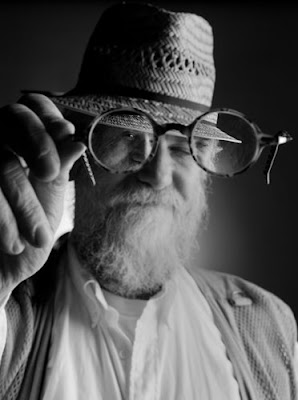--------oOo--------
Pulitzer Prizes for Photography:
Between 1942 and 1967 a Pulitzer Prize for Photography was awarded for photojournalism, that is, for photographs telling a news story. In 1968 that award was replaced by awards in two new categories:
- the Pulitzer Prize for Spot News Photography (photography in the nature of breaking news, as it has been called since 2000); and
- the Pulitzer Prize for Feature Photography (human interest and matters associated with new items).
World Press Photo of the Year:
From 1955 World Press Photo has awarded prizes for the best photographs in 10 categories, with an overall award for the image that "... is not only the photojournalistic encapsulation of the year, but represents an issue, situation or event of great journalistic importance, and does so in a way that demonstrates an outstanding level of visual perception and creativity".
The photographs are interesting not only in their own right but for being windows on history.
--------oOo--------
Award: World Press Photo of the Year
Year: 1994
Photographer: Larry Towell
Photograph(s): Palestinian Territories - Palestinian children raise their toy guns in the air.
Photograph(s):
Comments:
01 March, 1993
Gaza City, Gaza Strip. Palestinian boys raise toy guns in a gesture of defiance. The First Intifada, the first Palestinian uprising against Israel, started in December 1987 and strengthened the Arab population in their determination to fight the occupying Israeli force. In March 1993, Israel closed its border with Gaza, causing a massive rise in unemployment. With more than 800,000 people contained in the Israeli-patrolled, 8 km wide strip of land, bloodshed increased sharply. The violence reached a peak in May, when 30 Palestinians were killed and hundreds injured. The peace agreement signed in Washington D.C. on 13 September 1993 promised limited authority for the Gaza Strip and a withdrawal of the Israeli army.
World Press Photo website
About the photographer:
Larry Towell (born 1953) is a Canadian photographer, poet, and oral historian. Towell is known for his photographs of sites of political conflict in the Ukraine, Nicaragua, El Salvador, Standing Rock and Afghanistan, among others. In 1988, Towell became the first Canadian member of Magnum Photos.
Towell became a freelance photographer in 1984.
- His early work included projects on the Contra war in Nicaragua, the civil war in El Salvador, relatives of the disappeared in Guatemala, and American Vietnam War veterans who worked to rebuild Vietnam.
- In 1988, Towell joined the Magnum Photos agency, becoming the first Canadian associated with the group. His first magazine essay looked at the ecological damages from the Exxon Valdez oil spill. He has since had picture essays published in The New York Times, Life, Rolling Stone, and other magazines.
- His work has included documentation of the Palestinian-Israeli conflict, Mennonite migrant workers in Mexico, and a personal project on his family's farm in southern Ontario.
- From 2008 to 2011, Towell travelled five times to Afghanistan to photograph the social effects of the Afghan civil war.
- Between 2013 and 2015, he photographed the above and underground construction work in Toronto's Union Station.
- In 2015 his photo Isaac's first swim was published by Canada Post as a stamp.
- In 2016 Towell photographed the Standing Rock protest in Standing Rock, North Dakota.
He works in both film and digital photography formats. He has said "Black and white is still the poetic form of photography. Digital is for the moment; black and white is an investment of time and love." He has also worked with panoramic cameras to document the impact of natural disasters such as Hurricane Katrina.
Towell has published books of photographs, poetry, and oral history. He has also recorded several audio CDs of original poetry and songs.
“ If there's one theme that connects all my work, I think it's that of land-lessness; how land makes people into who they are and what happens to them when they lose it and thus lose their identities. ”
- Larry Towell
Gallery:
Some more Larry Towell photographs:
Dust Storm in Durango, Mexico, 1994
Prosthetics made at home by villagers who had lost limbs before receiving access to the Red Cross. International Committee of the Red Cross Prosthetic Centre. Mazar-i-Sharif. Afghanistan, 2008
Maternity Ward, San Salvador, 1991
Juma Gul, Charahi Qambar Refugee Camp, Kabul, Afghanistan, 2011
Gloria (pregnant) living in abandoned trailer, San Salvador City Dump, Soyapango, 1991










No comments:
Post a Comment
Note: Only a member of this blog may post a comment.